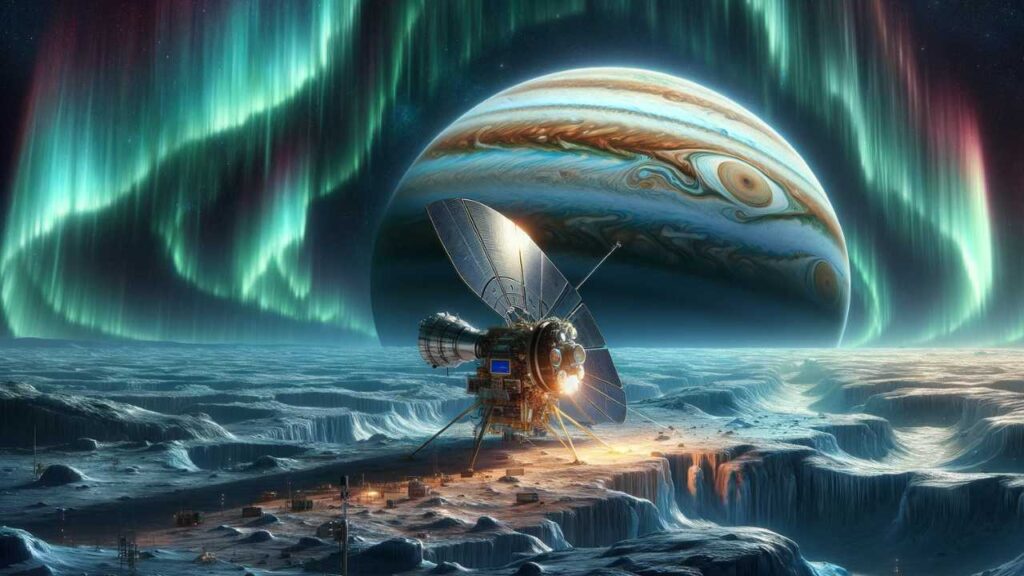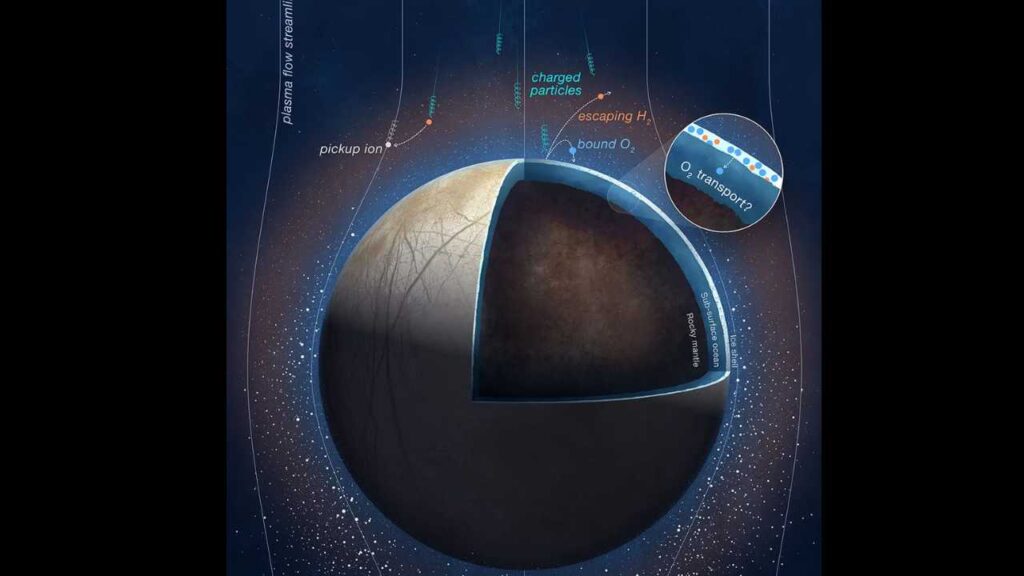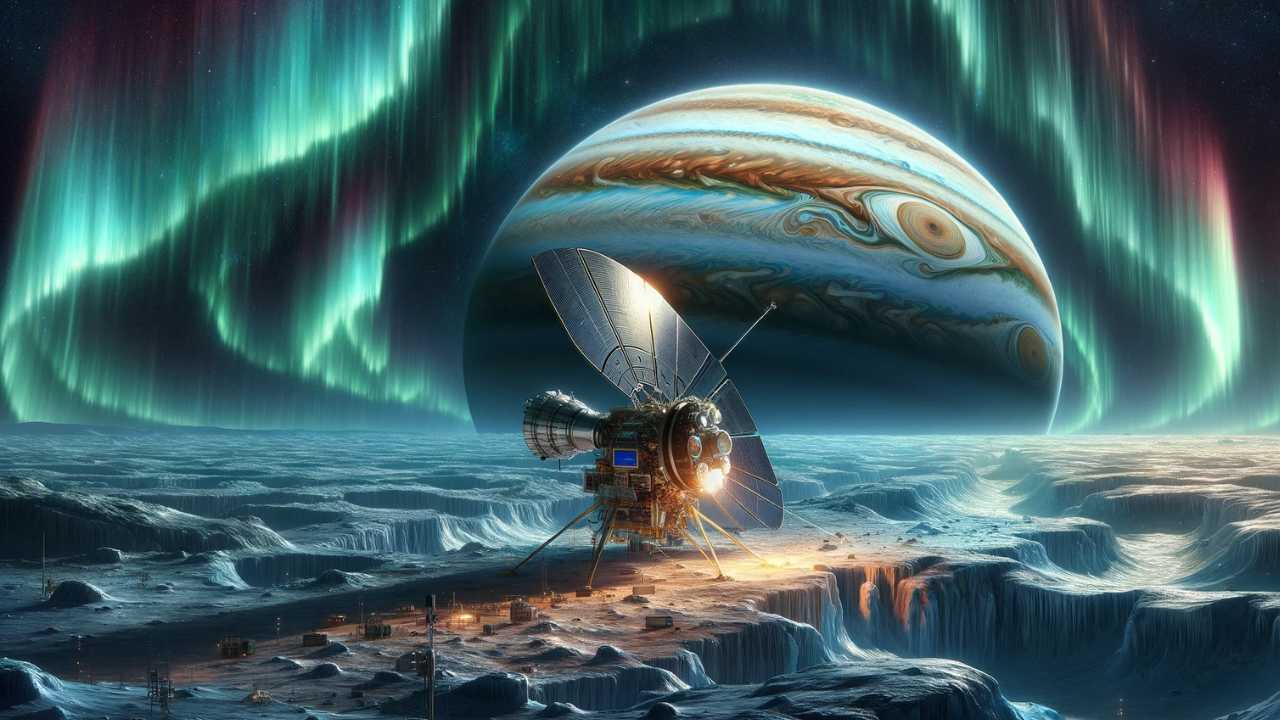“NASA, Juno Mission, Europa, Oxygen Production, Jovian Moon, Extraterrestrial Life, Subsurface Ocean, Space Exploration, Astrobiology, Solar System, Europa Clipper”
“Explore the groundbreaking findings from NASA’s Juno Mission about Europa’s oxygen production. Discover how these insights into the Jovian moon’s atmosphere and potential for life beneath its icy crust are revolutionizing our understanding of the solar system and the quest for extraterrestrial life.”

NASA’s Juno Mission
NASA’s Juno spacecraft has shed new light on the enigmatic Jovian moon, Europa, offering groundbreaking insights into the oxygen production rates on this icy celestial body. This fascinating discovery, documented in a recent study published in Nature Astronomy on March 4, emphasizes the importance of Europa in the ongoing search for extraterrestrial life and the understanding of celestial bodies’ atmospheres in our solar system.
Introduction to Europa’s Oxygen Mystery
Europa, the fourth largest of Jupiter’s 95 known moons, captivates scientists with its hidden subsurface ocean and potential for harboring life. The Juno mission, utilizing its sophisticated instruments, has taken a significant step forward in unraveling the secrets of this icy world, particularly its oxygen production mechanisms, which are pivotal for the possibility of life beneath its frozen crust.
Measuring Europa’s Oxygen Output
The study, utilizing data from the JADE instrument aboard Juno, marks a significant shift in our understanding of Europa’s oxygen production. Scientists calculated the oxygen production rate to be approximately 26 pounds per second (12 kilograms per second), a figure that starkly contrasts with previous estimates ranging widely up to over 2,000 pounds per second. This revelation not only refines our understanding of the moon’s atmospheric composition but also hints at the dynamic processes at play on Europa’s icy surface.
Europa’s Internal Ocean and Potential for Life
Beneath Europa’s ice shell lies a vast, salty ocean that has intrigued astrobiologists and astronomers alike. The possibility of this ocean being a cradle for life hinges on various factors, including the availability of essential elements like oxygen. The recent findings from Juno’s mission contribute crucial data to this puzzle, suggesting that oxygen, a key ingredient for life as we know it, could be seeping into Europa’s subsurface waters.
The Role of Jupiter’s Radiation
Europa’s unique position within Jupiter’s magnetic field exposes it to intense radiation, leading to the ionization of water molecules on its surface. This process, which splits water into hydrogen and oxygen, is central to the moon’s oxygen production. Understanding how Jupiter’s radiation belts influence Europa’s surface and atmosphere is essential for assessing the moon’s habitability and the potential for extraterrestrial life.
Juno’s Close Encounter with Europa
Juno’s flyby of Europa, at a mere 220 miles from the surface, allowed the spacecraft to capture detailed measurements of hydrogen and oxygen ions, providing invaluable data on the moon’s atmosphere and environmental conditions. These observations offer a new perspective on Europa’s interaction with its surrounding space environment and the ongoing processes that shape its surface and atmosphere.

The Future: Europa Clipper Mission
Looking ahead, NASA’s Europa Clipper mission, slated for launch in 2030, promises to delve deeper into the mysteries of Europa’s ocean and its suitability for life. Equipped with nine state-of-the-art science instruments, the mission aims to explore Europa’s ice shell, subsurface ocean, and geology in unprecedented detail, building on the foundational discoveries made by the Juno mission.
Conclusion: A Step Forward in Space Exploration
The Juno mission’s latest findings on Europa’s oxygen production represent a significant advancement in our quest to understand the habitability of other worlds. By closely examining the intricate dance between Europa’s surface, its internal ocean, and the surrounding space environment, scientists are slowly peeling back the layers of one of the most intriguing moons in our solar system. As we look to the future, missions like Juno and the upcoming Europa Clipper continue to underscore the importance of space exploration in unlocking the mysteries of our universe.
In essence, NASA’s Juno mission has opened a new chapter in our understanding of Europa, bringing us closer to unraveling the complexities of this icy world and its potential to support life. As we continue to explore the outer reaches of our solar system, the insights gleaned from Europa will undoubtedly play a crucial role in shaping our knowledge of celestial bodies and their environments.
Other Links-
